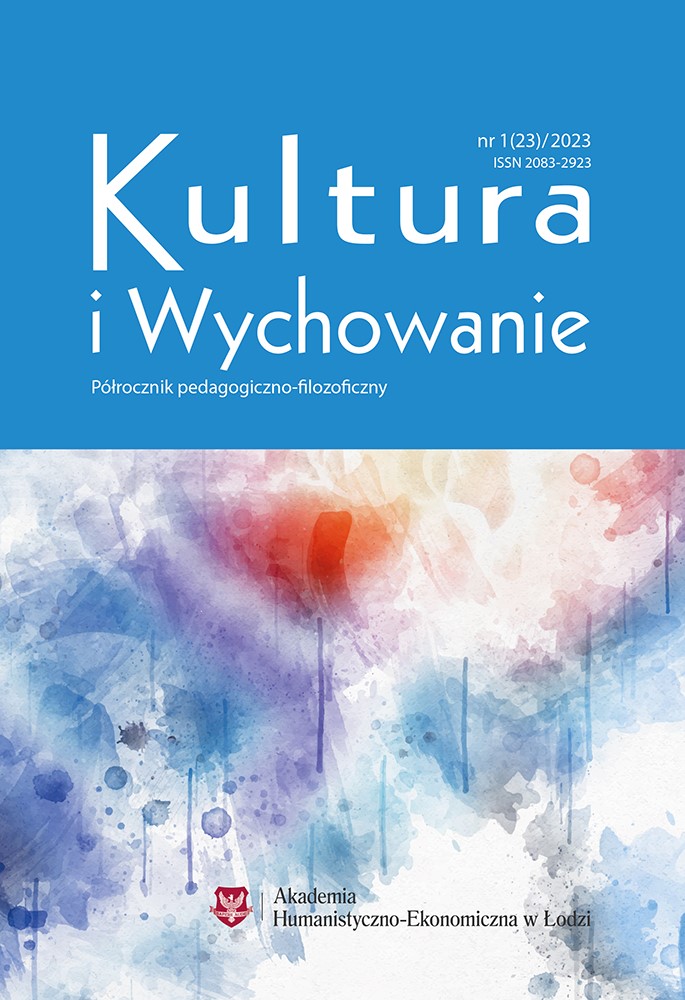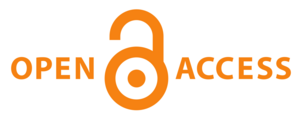Alternative teaching in the modern model of education .
DOI:
https://doi.org/10.25312/2083-2923.23_01jczKeywords:
alternative education, different teaching, creative attitudeAbstract
In the progressive model subject teachings of contents are integrated, and the teacher is keeping active pupils which by experiencing will get to know world and oneself company. Pupils are learning also to organize their process of the knowledge acquisition and the ability, and motivated inwardly are seeking interesting learning techniques independently. In the alternative teaching the pressure is being put on the cooperation and experiments conducted also apart from the school. The optionality of the teaching is relying among others on the person of the teacher, of which creating many safe and diversified chances for the child in an optimal way for becoming initiator, participant, perpetrator is a task of action (independently and in collaboration with other), of experiencing pleasure from taken action, dealing defeats with, as well as deriving satisfaction from own action, this way in the real world, like of the fantasy and the play. Thanks so for experience the child is supposed to learn the sensitivity for own purposes, readinesses to put purposes and the courage for oneself in their realization. In the progressive model subject teachings of contents are integrated, and the teacher is keeping active pupils which by experiencing will get to know world and oneself company. Pupils are learning also to organize their process of the knowledge acquisition and the ability, and motivated inwardly are seeking interesting learning techniques independently. In the alternative teaching the pressure is being put on the cooperation and experiments conducted also apart from the school. The optionality of the teaching is relying among others on the person of the teacher, of which creating many safe and diversified chances for the child in an optimal way for becoming initiator, participant, perpetrator is a task of action (independently and in collaboration with other), of experiencing pleasure from taken action, dealing defeats with, as well as deriving satisfaction from own action, this way in the real world, like of the fantasy and the play. Thanks so for experience the child is supposed to learn the sensitivity for own purposes, readinesses to put purposes and the courage for oneself in their realization.
Downloads
References
Bauer J., Co z tą szkołą? Siedem perspektyw dla uczniów, nauczycieli i rodziców, Wydawnictwo Dobra Literatura, Słupsk 2015.
Dąbek A., Psychologiczne podstawy twórczej aktywności dziecka, Wydawnictwo Wyższej Szkoły Pedagogicznej Zielona Góra 1988.
Fisher R., Uczymy jak myśleć, WSiP, Warszawa 1999.
Gloton R., Clero C., Twórcza aktywność dziecka, WSiP, Warszawa 1988.
Husén T., Postlethwaite N., Encyclopedia of Education, Oxford 1985.
Koniec tradycyjnej szkoły – Unschooling po polsku, http://weekend.gazeta.pl/weekend/1,152121,17770791,Koniec_tradycyjnej_szkoly__Unschooling_po_polsku_.html [dostęp: 8.12.2022].
Korczak J., Jak kochać dziecko. Prawo dziecka do szacunku, Instytut Książki, Warszawa 2012.
Krzywoń D., Kraina kreatywności. Sposoby przeciwdziałania rutynie w pracy z dziećmi poprzez ekspresję twórczą i artystyczną, Oficyna Wydawnicza „Humanitas”, Sosnowiec 2008.
Kujawiński J., Kierowanie własną twórczą aktywnością w początkowym nauczaniu matematyki, „Życie Szkoły” 1981, nr 4.
Kurowska B., Stymulowanie aktywności twórczej dzieci w wieku przedszkolnym, „Rocznik Komisji Nauk Pedagogicznych” 2011, nr LXIV.
Małek M., Rozwijanie zdolności twórczych, „Bliżej Przedszkola” 2008, nr 1.
Milerski B., Śliwerski B., Leksykon PWN „Pedagogika”, Warszawa 2000.
Nalaskowski A., Obsesja alternatyw?, „Teraźniejszość – Człowiek – Edukacja” 2001, nr 4.
Nowakowska-Siuta R., Recenzja: Zbyszko Melosik, Bogusław Śliwerski (red. naukowa). Edukacja alternatywna w XXI wieku, Kraków 2010, ss. 646, „Ruch Pedagogiczny” 2011, nr 3–4.
Pietrasiński Z., Myślenie twórcze, PZWS, Warszawa 1969.
Płóciennik E., Stymulowanie zdolności twórczych dziecka. Weryfikacja techniki obrazków dynamicznych, Wydawnictwo Uniwersytetu Łódzkiego, Łódź 2010.
Sementowicz H., Freinet w Polsce, WSiP, Warszawa 1998.
Stawinoga R., Aktywność twórcza we współczesnej edukacji, „Nowa Szkoła” 2002, nr 3.
Szmidt K.J., Pedagogika twórczości, Gdańskie Wydawnictwo Psychologiczne, Gdańsk 2007.
Śliwerski B., O nowym modelu szkoły alternatywnej, 2011, http://cms2.wsp.crowley.pl/_les/Boguslaw%20Sliwerski%20Nowa%20szkola%20alternatywna [dostęp: 8.12.2022].
Zamojska E., Alternatywność i innowacyjność w edukacji współczesnej – na przykładzie Czech, „Kultura – Społeczeństwo – Edukacja” 2012, nr 1.
Downloads
Published
Issue
Section
License
Copyright (c) 2023 Akademia Humanistyczno-Ekonomiczna w Łodzi

This work is licensed under a Creative Commons Attribution-ShareAlike 4.0 International License.



